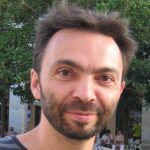Link to Pubmed [PMID] – 8227007
J. Biol. Chem. 1993 Nov;268(33):24527-30
MalT, the transcriptional activator of the Escherichia coli maltose regulon, is a 901-amino acid-long protein that specifically binds to short, asymmetric nucleotide sequences present in several copies in the promoters of the regulon. We report that the protein structure involved in this specific binding is carried by a small C-terminal part of MalT encompassing the last 95 amino acid residues. This was demonstrated by fusing the last 95 codons of malT to the gene that encodes glutathione S-transferase, purifying the hybrid protein by affinity chromatography, and comparing the DNase I and dimethyl sulfate footprints of the hybrid and of wild-type MalT on different MalT-binding sites. MalT belongs to a large family of prokaryotic transcriptional activators, which share significant homology in their approximately 60-amino acid C-terminal regions. Our result strongly supports the suggestion that the region of homology corresponds to the DNA-binding domain of the proteins in this family.

